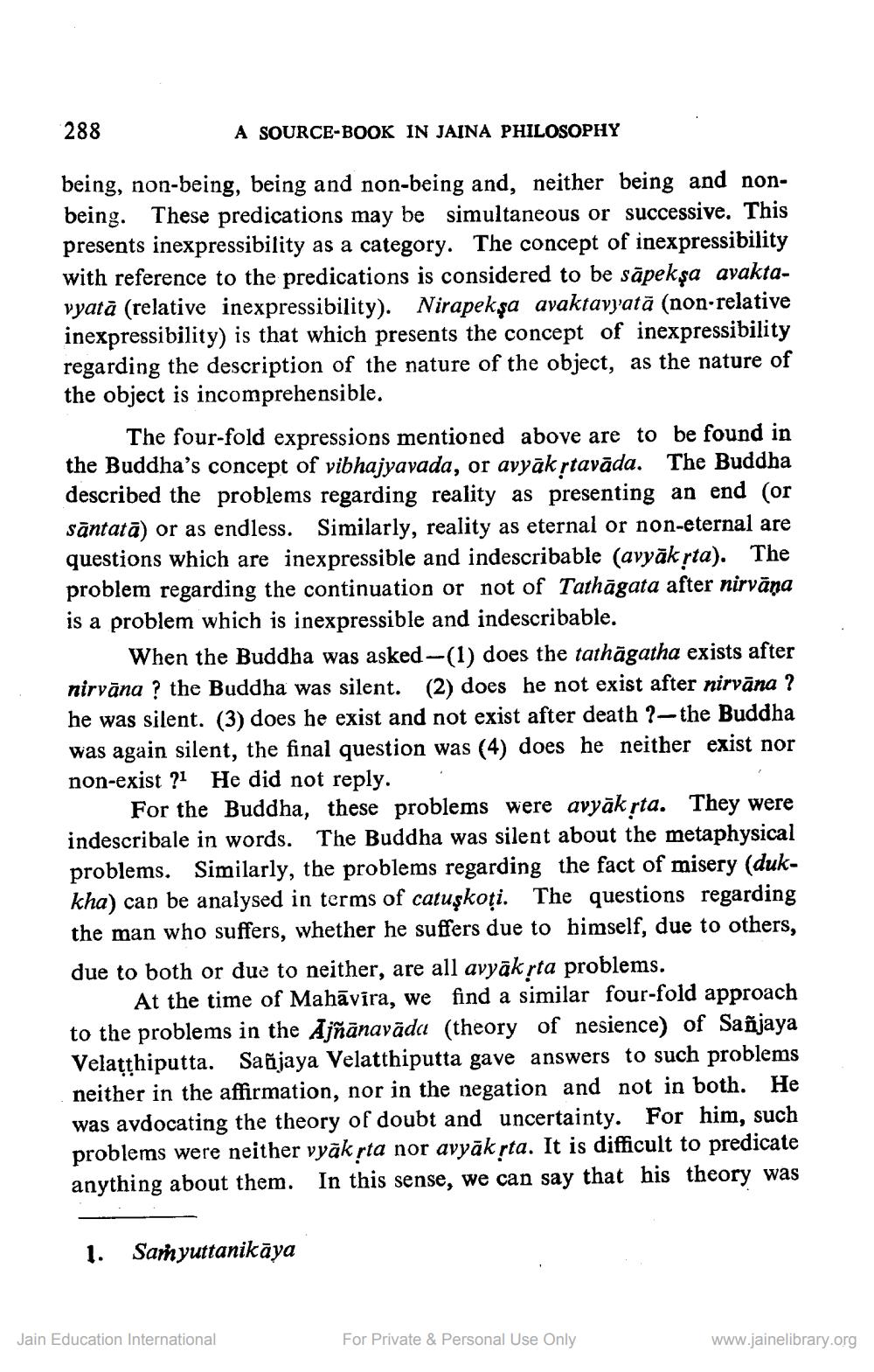________________
288
A SOURCE-BOOK IN JAINA PHILOSOPHY
being, non-being, being and non-being and, neither being and nonbeing. These predications may be simultaneous or successive. This presents inexpressibility as a category. The concept of inexpressibility with reference to the predications is considered to be sāpekļa avaktavyatā (relative inexpressibility). Nirapeksa avaktavyatā (non-relative inexpressibility) is that which presents the concept of inexpressibility regarding the description of the nature of the object, as the nature of the object is incomprehensible.
The four-fold expressions mentioned above are to be found in the Buddha's concept of vibhajyavada, or avyāk stavāda. The Buddha described the problems regarding reality as presenting an end (or sāntatā) or as endless. Similarly, reality as eternal or non-eternal are questions which are inexpressible and indescribable (avyāk sta). The problem regarding the continuation or not of Tathāgata after nirvāna is a problem which is inexpressible and indescribable.
When the Buddha was asked -(1) does the tathāgatha exists after nirvāna ? the Buddha was silent. (2) does he not exist after nirvana ? he was silent. (3) does he exist and not exist after death 2- the Buddha was again silent, the final question was (4) does he neither exist nor non-exist ?1 He did not reply. .
For the Buddha, these problems were avyāk sta. They were indescribale in words. The Buddha was silent about the metaphysical problems. Similarly, the problems regarding the fact of misery (dukkha) can be analysed in terms of catuṣkoți. The questions regarding the man who suffers, whether he suffers due to himself, due to others, due to both or due to neither, are all avyāk sta problems.
At the time of Mahāvīra, we find a similar four-fold approach to the problems in the Ajñānavāda (theory of nesience) of Sañjaya Velaţthiputta. Sañjaya Velatthiputta gave answers to such problems neither in the affirmation, nor in the negation and not in both. He was avdocating the theory of doubt and uncertainty. For him, such problems were neither vyāk rta nor avyāk rta. It is difficult to predicate anything about them. In this sense, we can say that his theory was
1.
Saṁyuttanikāya
Jain Education International
For Private & Personal Use Only
www.jainelibrary.org




